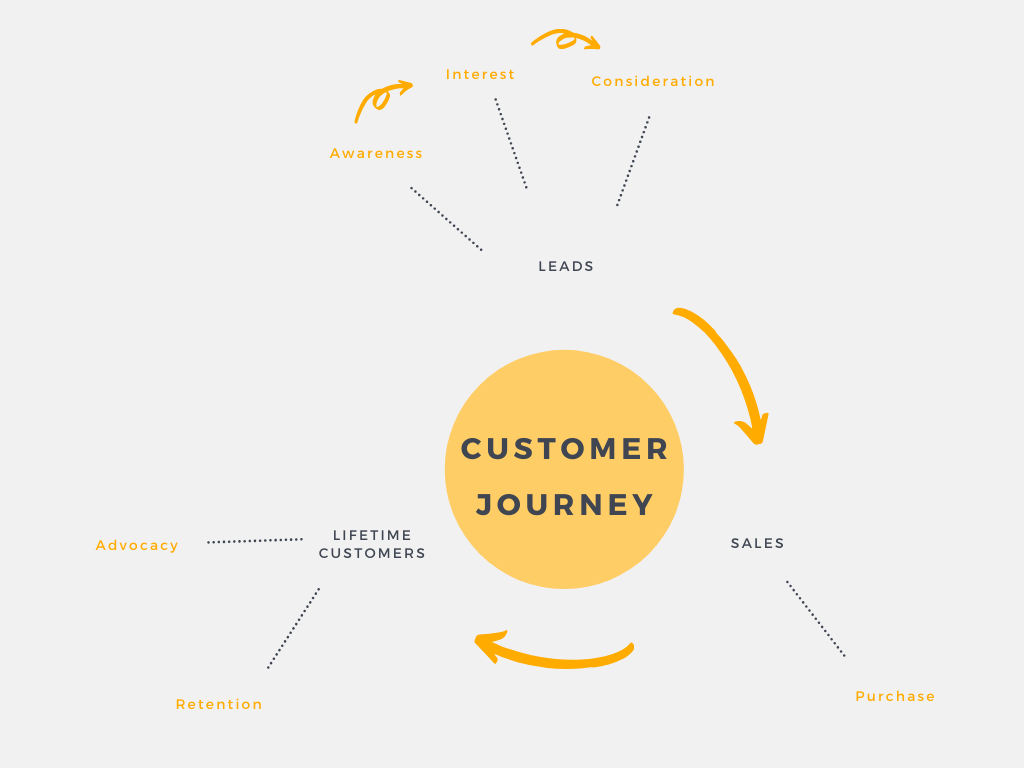A Foolproof Digital Marketing Strategy Process for your Business
You already have an impressive product or that inimitable service. You are well aware of your competitive advantage and the value your company brings to the customers. Now you can sit back and relax, everything’s already there, and now you only have to wait for those precious leads.
Well, not exactly.
Many companies often overlook digital marketing and its importance. They do not understand the field of marketing and it always seems so unpredictable. Business owners wonder how much should they put in, and what will they get back in return? Is it even worth doing?
Of course, it is. And we’re here to show you what a foolproof digital marketing strategy looks like.
But before getting there, let us walk you through our digital marketing plan.
How Does Our Digital Marketing Program Work?
At Asset Digital, there’s no one-size-fits-all digital marketing strategy, and we highly endorse customization. We do this through a round of discovery meeting to understand your online marketing requirements.
We then plan a well-tailored digital marketing campaign to help grow your business and achieve the set goals. Once the plan is ready, we execute is religiously.
1. Bring in Prospects: Generate website traffic by building a customized content marketing strategy and ensuring all aspects of search engine optimization (SEO) are worked on. Furthermore, we can devise a strategy for Pay-Per-Click (PPC) marketing, Email marketing, and Social Media Marketing, keeping the target audience in mind.
2. Boosting Conversion Rate: To convert the one-time viewers into leads, you need to provide them something of value. We do this by offering highly informative or downloadable content in the form of Signups, Landing pages, eBooks, Blogs, Infographics, Videos and webinars.
A/B testing is another tool we use to intensify the impact of our digital marketing efforts.
3. Closing Sales: You cannot expect your leads to purchase your products or services without providing a call to action for them. We work closely with your sales team so they can implement the latest digital marketing tactics and tools to close more sales.
We’re not just another digital marketing firm offering services for the sake of it. We make it a point to understand your audience and its pain points to provide a suitable solution. Once the content is ready, our team uses the latest tools and strategies to augment your brand awareness through multiple digital channels.
Creating A Concrete Digital Marketing Strategy – Step-by-Step Process
So far, you know all about our digital marketing program and how it works. But that is not enough. You need to create a digital marketing strategy to have a clear picture of what you are working for.
Step 1: Decide To Whom You Are Selling
The first and most important aspect of a successful digital marketing strategy is knowing your target audience. To whom will you be selling your products or services? What do they like? How do they spend their free time?
There are so many questions to answer!
Start by analyzing the data you have about your customers. Depending on your business, there are several things you might be interested in:
• Demographic data
• Consumer behavior
• Challenges
• Motivations and goals
Some of this information is quantitative, and you can easily find it in the data you have about your customers. However, you will have to dig deeper to know more about the qualitative bit (such as their challenges, motivations, and goals). In this case, it’s essential to talk to your customers and ask them questions that could help you get a clearer picture.
Once you’ve gathered all the information, the last step is to create buyer personas. By humanizing your target audience, it will be easier to personalize your digital marketing campaigns.
Step 2: Define What Goals You Want To Achieve With Digital Marketing
Now that you know your target audience, it’s time to move on to goal setting. When setting your goals, there are two important questions to ask yourself:
• What are my business goals this quarter?
• What are the indicators of success?
You will have to set clear goals. Your whole marketing budget will be based on that. Are you looking to get 10,000 more followers on Facebook this quarter? In this case, you may want to spend a significant proportion of your digital marketing budget on social media activities.
With well-defined goals, you can put your efforts into the right marketing activities to grow your business.
Step 3: Analyze Your Existing Digital Channels And Assets
Once you have a clear picture of your goals, you need to assess what you got and what you need. Are your existing digital channels and assets enough for successfully implementing your internet marketing strategy? You can determine by following the owned, earned, and paid media framework.
1. Owned Media: This category comprises all the parts of your digital marketing strategy that you have control over. It includes blogs and images, social media profiles, websites, and even off-site content on other sites (under your name).
2. Earned Media: It is the recognition you’ve earned through word-of-mouth from your customers or the publishing blogs and PRs on other websites. Even the positive reviews on the internet come under earned media.
3. Paid Media: Contrary to earned media, paid media includes the paid advertising channels and assets for generating traffic. From PPC and Google AdWords to paid social media posts, all the digital marketing tactics you pay for are paid media.
Let’s take an example of how you can use all three types of media.
You already have valuable content on your landing page or website that you wish to share with a larger audience. This is your owned media.
You request your customers and friends to share the content. It now becomes earned media, getting you organic traffic. To promote it further, you pay for it to get advertised on Instagram. It finally becomes a part of your paid media.
Note: You need not use paid media if the owned and earned media channels are doing the trick. Analyze all your assets to build a plan of action.
Step 4: Let’s Turn To Your Digital Marketing Budget!
After setting your goals and measuring your achievements, you can finally plan your digital marketing budget.
One of the best practices to calculate your budget is as a percentage of the company’s projected gross revenue. Based on the maturity of your company, you can decide how high that percentage should be. Depending on how long your company has been in business, you should allocate 20% of your gross revenue for marketing.
Then, it’s time to break down your budget estimate into categories. Being able to break down your marketing costs based on their nature is essential. Here are the categories to consider:
• SEO costs
• Website-related expenses
• Social media and content marketing expenses
• Promotional expenses
Step 5: Your Budget Is Set. Now What?
You have defined your target audience, your goals, and the budget. We can now turn to the strategy itself. How, when, and where will you be communicating your message? This is where customer journey mapping comes into the picture.
Customer journey mapping helps you identify the process through which your prospects become customers. It looks at the buyer’s journey from awareness to advocacy. By considering each stage, you’re able to identify when, where, and how you should communicate to your prospects. This ensures you catch and keep your customers’ interest.
Below, you can see what the ideal customer journey looks like, and the stages related to it.

We advise you to have a look at these questions and answer them:
• Where can I reach my customers at this time?
• What do my customers want at this stage?
• What are their alternatives?
• What customer challenges should I address to get them convinced?
• How can I make sure they choose us instead of other alternatives?
• What platforms and devices are they most active on?
By answering these questions, you’ll see how to communicate your message effectively. Make sure to evaluate your marketing platforms thoroughly and to always choose the one that fits a given stage the best. For example, social media posts might be good for raising awareness, whereas PPC ads work best from the consideration stage.
Step 6: The Last Ingredient For A Successful Digital Marketing Strategy Process: Update Your Plan!
You’ve seen your prospects’ customer journey and also identified the best way to communicate with them at each stage. There’s just one thing left, and that’s revision.
Draw your conclusions and plan the goals for the next quarter based on what you’ve learned.
Putting It All Together
As you can see, there are many factors to consider when planning a digital marketing strategy. To sum up, here’s what you’ll have to focus on:
1. Identifying your target audience and buyer personas
2. Setting your digital marketing goals
3. Planning your digital marketing budget
4. Examining the customer journey
5. Updating your plan as necessary
How To Track Progress?
You never know if your performance is up to the mark until you measure it. Therefore, our work does not stop at digital advertising. We report back to you with quantitative & easy to understand results that align with your business goals.
We constantly review monthly and weekly plans to stay on track and keep your digital marketing campaign thriving. Our result-oriented approach lets us spot areas of weakness and rework until they generate value.
Do you think you could use some help? We’re always here to help you to get the most out of your digital marketing strategy. Book a free, no-obligation call with us!



